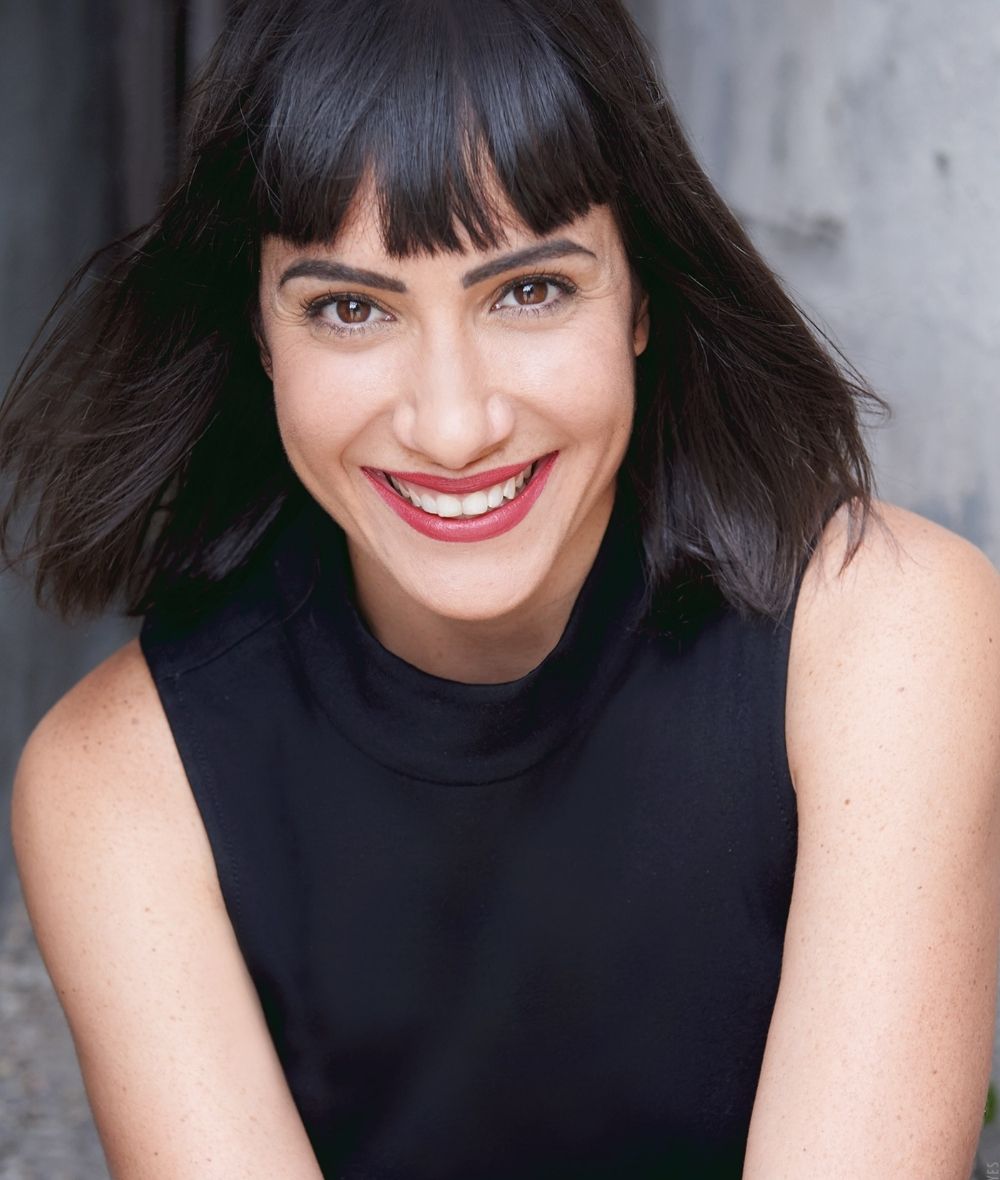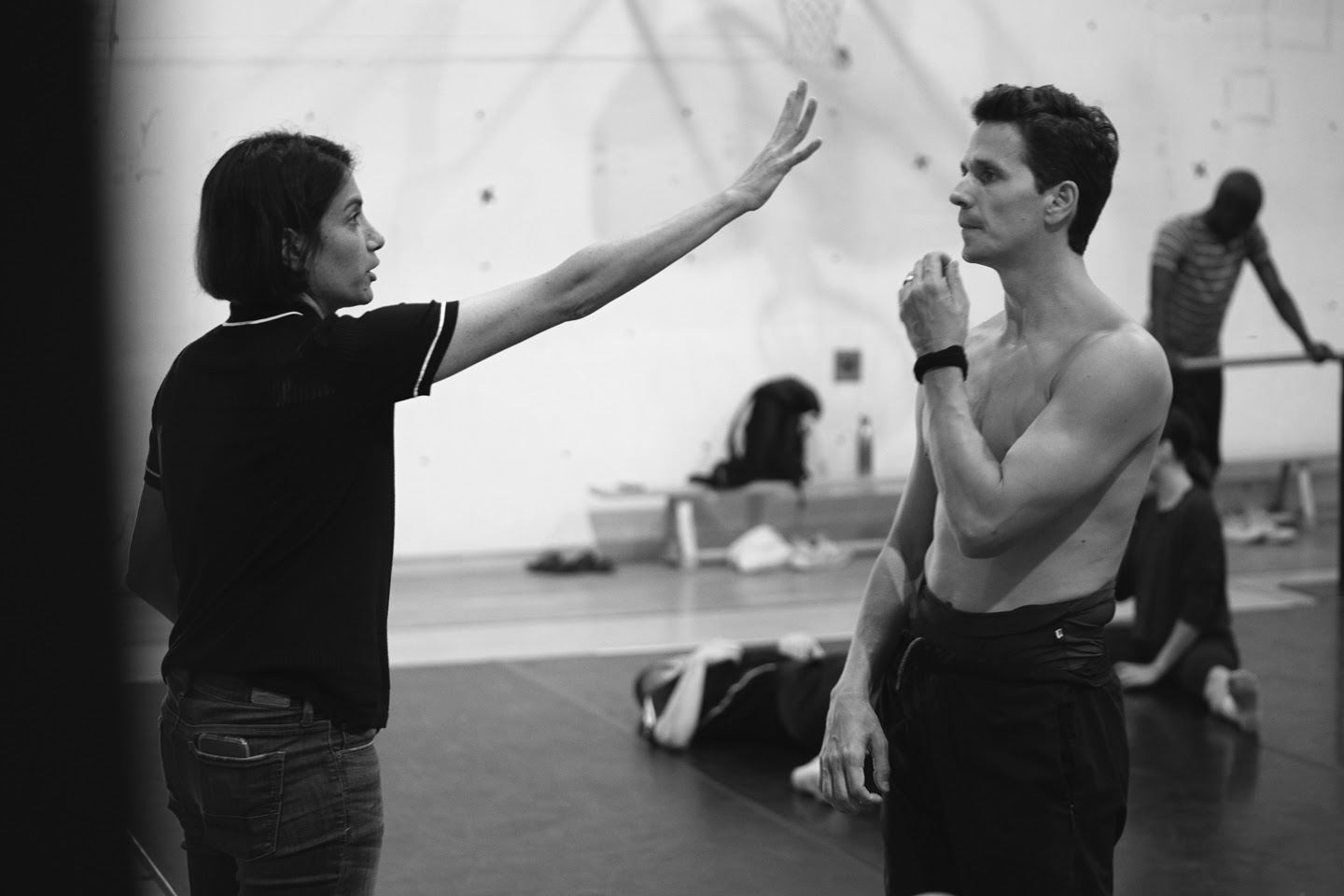Anisa Tejpar on forging your own path and the importance of consent in dance

Photo by Tim Leyes
Throughout the pandemic last year and during the Fall semester, Dora Mavor Moore Award Winner Anisa Tejpar taught Ballet to the first two years of the Dance program, and Intimacy and Consent to all four years. A graduate of the National Ballet School, while her “first love is dance,” she not only performs on stage, but in film, television, and video games, as well as being a choreographer and producer.
Anisa has forged her own path in the industry. Over fifteen years ago, Anisa and her colleague Jennifer Nichols founded Hit & Run Dance Productions (external link) . “One day in a bar, I said to her, it’s got to be better than this. We have to be the agents of our own destiny. We can’t wait around for people to tell us we’re great, or give us opportunities.”
From there, they began performing small shows for hire at random events. “We liked taking ballet and contemporary dance out of the theatre,” which wasn’t common at the time. Nowadays, “we have Nuit Blanche among other outdoor art installations and events,” but when Anisa began her journey “it was more avant garde.”
Clients Anisa has worked with include Evergreen Brickworks, Casa Loma, MAC Cosmetics, Puma, Nike, Blackberry, Tellus - “just name it, we’ve done it. And it’s all because we un-contextualized dance, but then put it right back into context. We took it out of what people thought it was, but made it work for the new context.” This curated process makes clients feel “they're getting our artistic voice, within what they want for their clients, who may have never seen anything like this before.”
One example of an innovative event Hit & Run produced is their Haunted Cinema, “a drive-in movie with activated performers” hosted at Ontario Place over the Halloween weekend. They sold out four nights, and employed over seventy-five artists - an incredible feat after the pandemic. “We engaged the community, and we made something that no one had ever done in Toronto before.”
We are always trying to make new things happen... we don't sit back. We're in the fire, we're in the ring, and we go. That's how we are.
Anisa’s advice to current students is to consider diversifying their skillset. “I have subscribed to this octopus style of living. You have many tentacles out in the world, all doing different things, all at the same time.” While having one job for a long period of time is the standard for some people, “that has not been my path at all. To stay relevant and happening in this industry, you gotta stay in the game.” Ultimately, this style of living isn’t for everyone, but there is no one-size-fits-all. “You just have to figure out what works for you, and what you want.”
One of the art forms Anisa has expanded into is intimacy work. She began to dip her toe into this work once she was already established as a dancer, choreographer, rehearsal director, and producer.
I saw a gap. We give dancers this license to be the agents of their own bodies, to know everything about themselves, to be able to use their bodies, to be strong, willful... and then at the drop of a hat, someone in the room tells you what to do, and you just do it.

Photo of Anisa coaching Guillaume Côté by: Sasha Onyshchenko
Anisa notes that the theatre world has been working on intimacy and consent for a while. “Me Too was a big moment for film, television, and theatre. But in dance, it isn’t being done as much because there is implied consent.” It is expected that dancers will touch one another and be in close proximity, and it isn’t as readily discussed. Anisa highlights that she likes the part of dance “which requires me to jump on your shoulders, and trust you with my entire life.” While she doesn’t want the trust aspect to end, she hopes to bring awareness to consent and how everyone has their own boundaries.
"Triggering content, dynamics in a room, power dynamics, gender dynamics, all of these things are ever evolving. We just have to have our eyes and ears open for what can pop up."
This is especially important, given the hierarchical nature of theatre and dance. “There is a director. They are God. There is a choreographer. God.” Anisa remarks that everyone has habits, “ways of directing or teaching which are just that - habits. Something they learned from their own teachers. Sometimes it just takes naming it, and opening our eyes to new perspectives, to shift our language and make a safer environment for everyone.”
Dance student Meredith Gaston recalls Anisa’s advice to her students was to know they are “always allowed to say no.” The agency to set their own boundaries “is incredibly valuable and important to hear.”
Even Anisa’s ballet instruction embraces difference and agency. Anisa “focused on finding expression within the form, rather than enforcing gender binaries on us as dancers” Meredith shares. “Her style of teaching encourages you to find ways to maximize your facility and make ballet fit your own body, rather than trying to fit into a particular mould.”
[Anisa's style of teaching] encapsulates the dancer's individuality, she diminishes this gender language as it is about the person’s movement, not the identification of them.
Anisa shares her knowledge around intimacy not only with students, but with faculty. After a faculty workshop led by Anisa, “many of those teachers who I run into around campus tell me they’ve been thinking about our discussion, and now they do things a bit differently.”
Anisa poses the question to her colleagues and to herself, “what could things be like?” This question offers a myriad of possibilities. “It’s not about should be, or may be. It’s about what could be.” On top of being a more accommodating and inspiring question than the others, “could” also changes over time. “What we’re talking about right now will mean nothing in five years… but it’s important we have this conversation, because only then, the next conversation comes.”
As a teacher, Anisa hopes students learn the importance of forging their own path. “If you’re going to fit into the box, make sure it’s a box you made. Make sure you’re the architect. It’s not worth being what somebody else wants you to be in the end.” Anisa clarifies that doesn’t mean people should work in a vacuum.
I love collaboration. But on the same level, you have to define what you do, your responsibilities, wants, skills, needs. You have to do that for yourself. Nobody is gonna do it for you.